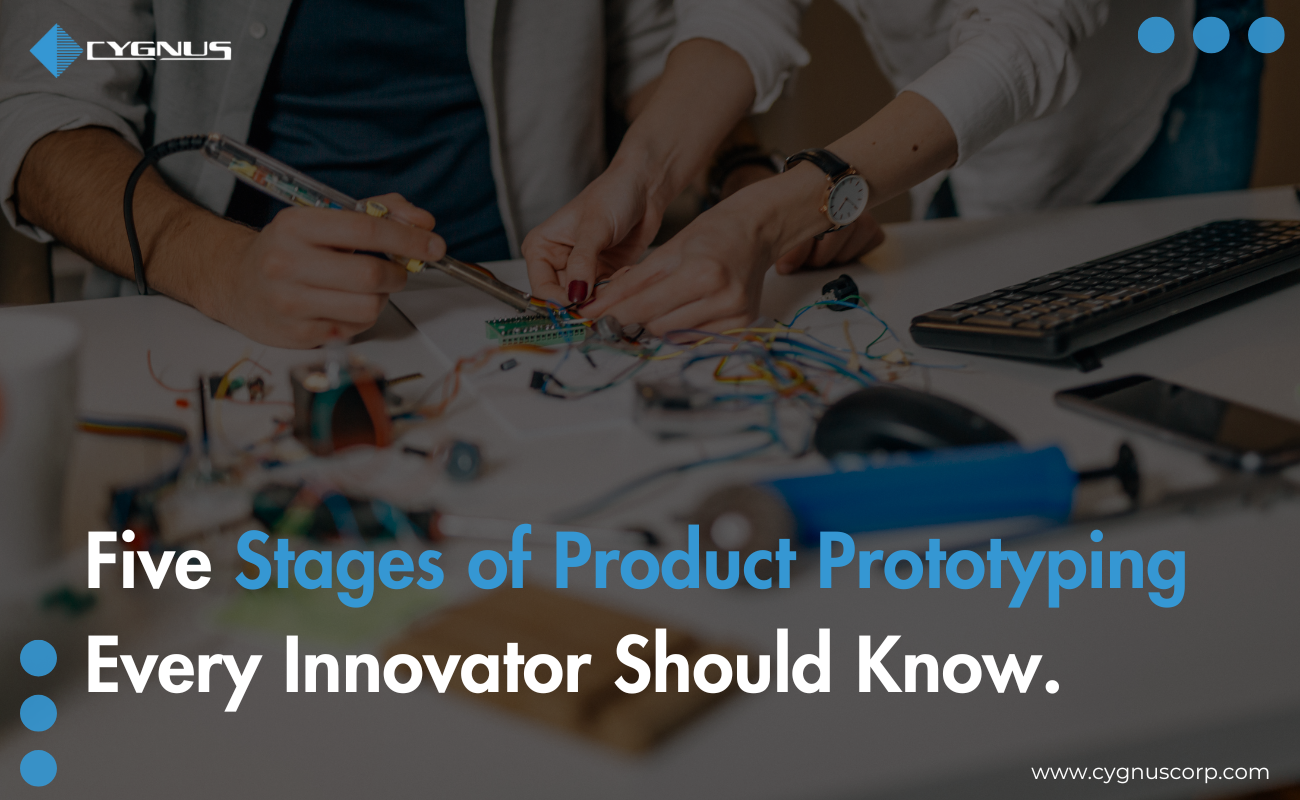Innovation often starts with a great idea. But turning that idea into a real product ready to sell involves a structured process called product prototyping. Whether you’re new to business or experienced in developing products, knowing these stages of product prototyping is crucial for bringing something new to life.
Product prototyping isn’t just about making a model. It’s a methodical approach that helps creators refine their ideas, test how things work, and get feedback before making a final version. This process helps catch problems early and makes sure the product meets what customers want.
In this blog, we’ll explain the five main stages of product prototyping. This guide helps you smoothly move from your first idea to a product that’s ready for the market.
Whether you’re working on a new gadget, software, or any other new idea, these steps will make your product development journey easier and more successful.
1. Concept Development
The first stage of product prototyping is concept development. This is where your idea takes its initial shape. It involves brainstorming and sketching to explore different aspects of the product.
- Idea Generation: Gather ideas from different sources. This could be from market research, customer feedback, or team brainstorming sessions.
- Sketching: Draw rough sketches of your product. These sketches don’t have to be perfect; they are just to give a visual form to your ideas.
- Research: Conduct thorough research to understand the market needs, potential competitors, and the technical feasibility of your concept.
Example:
If you are developing a new type of smartwatch, this stage would involve sketching different designs and features, and researching what customers want in a smartwatch.
2. Initial Design
Once you have a clear concept, the next stage is to create an initial design. This is a more detailed version of your sketches. It is often created using computer-aided design (CAD) software.
- CAD Modeling: Use CAD software to create a detailed 3D model of your product. This model should include all the features and dimensions.
- Technical Specifications: Define the technical specifications of the product, such as materials, dimensions, and functionalities.
- Feedback: Get feedback from stakeholders and potential users on the initial design. This can help in identifying any major flaws early on.
Example:
For the smartwatch, you would create a 3D model showing the design, size, and features like the screen, buttons, and sensors.
3. Prototype Creation
The prototype creation stage involves building a physical model of your product. This can be done using various methods, depending on the complexity of the product.
- 3D Printing: For simple prototypes, 3D printing is a quick and cost-effective method.
- CNC Machining: For more complex prototypes, CNC machining can provide more precision and durability.
- Hand-Built Models: For very early-stage prototypes, sometimes hand-built models using materials like clay or foam can be useful.
Example:
You might 3D print a basic version of the smartwatch to test the size, shape, and feel on the wrist.
4. Testing and Refinement
Testing is a critical stage in product prototyping. It involves evaluating the prototype to ensure it meets all the requirements and functions as expected.
- Functional Testing: Test the prototype to make sure all functionalities work correctly.
- User Testing: Get feedback from potential users on the usability and design of the prototype.
- Iterative Refinement: Use the feedback to refine and improve the prototype. This may involve several rounds of testing and modification.
Example:
Test the smartwatch for features like touchscreen responsiveness, battery life, and comfort. Get feedback from users to make improvements.
5. Final Prototype and Production
The final stage is to create a refined version of the prototype that is ready for mass production. This involves finalizing the design and preparing for manufacturing.
- Final Design Adjustments: Make any last adjustments to the design based on the testing feedback.
- Production Planning: Plan the production process, including sourcing materials, setting up manufacturing lines, and quality control.
- Final Prototype: Create a final prototype that is a near-exact replica of the product that will be mass-produced.
Example:
Produce the final version of the smartwatch with all the refined features and make sure it is ready for mass production.
Conclusion
Understanding the stages of product prototyping is essential for successfully bringing a new product to market. From concept development to final production, each stage plays a vital role in ensuring the product is functional, user-friendly, and market-ready.
However, by following these stages of product prototyping, you can efficiently turn your innovative ideas into reality and meet the needs of your target customers.
At Cygnuscorp, we can help you build and refine your prototypes and make sure a smooth transition from concept to production. So, let us assist you in transforming your ideas into tangible, successful products.




